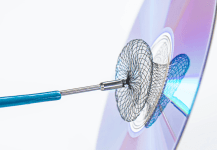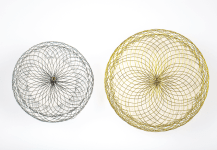The prevalence of tricuspid regurgitation (TR) is significant; its prognosis is well known, and severe TR stages are associated with higher mortality and hospitalization for cardiac failure (CF). Seeing as valve disease tends to evolve over time, in advanced stages, we usually check on patients at specified intervals for early identification of potential hemodynamic complications…
SAFE-TAVI Study: Safety and Efficacy of the Pressure Sensor and Pacing Guidewire
Currently, we observe an increase in the number of transcatheter aortic valve replacement (TAVR) procedures due to its expansion toward a younger population with lower risk. For this reason, it is crucial to maintain continuous technological innovation to minimize post-procedural complications. The FDA has approved the SavyWire, a preformed 0.035-caliber guidewire that offers three essential…
Predictors of Stroke at 30 Days and 6 Months After TAVR
While the rate of stroke has decreased since the early days of transcatheter aortic valve replacement (TAVR), it remains non-negligible, reaching up to 1%-3% at 30 days. As TAVR progressively expands to low-risk populations and younger patients, identifying risk factors for patient selection and management in stroke prevention becomes crucial. While researchers have identified predictors…
Transcatheter Closure of Patent Foramen Ovale in Thrombophilia Patients
The transcatheter treatment of patent foramen ovale (PFO) has been shown to reduce thromboembolic events in patients with cryptogenic stroke. However, most of large randomized studies have failed to include patients with thrombophilia, either inherited or acquired. For instance, the RESPECT study excluded patients with antiphospholipid antibodies (AFA) or hyperhomocysteinemia, while the REDUCE screened for…
ESC 2023 | BUDAPEST CRT Upgrade trial
Approximately 1 million pacemakers (PM) or Implantable cardioverter-defibrillators (ICDs) are placed every year around the world, and it has been observed that 30% of these cases present left ventricular dysfunction, mainly systolic. This dysfunction is attributed to PM induced right ventricle dyssynchrony, which in time leads to hospitalization for cardiac failure and increased clinical adverse…
Left Atrial Appendage Closure: As Effective in Men and Women?
Atrial fibrillation is the most prevalent arrhythmia and to prevent its potential complications, we should administer anticoagulants (OACs), either warfarin or the new direct oral anticoagulants (DOACs). Even though these drugs have been shown effective, they still involve the risk of bleeding, especially gastrointestinal bleeding, which in turn leads to numerous hospitalizations. Left atrial appendage occlusion…
EuroPCR 2023 | ACURATE Neo2: Results After 5 Years
The ACURATE Neo2 valve is an evolution of the first-generation ACURATE Neo valve with a low rate of pacemaker implantation and a decrease in paravalvular leak, also compatible with the 14F introducer. This prospective study included patients with symptomatic severe aortic stenosis at high surgical risk who underwent ACURATE Neo2 valve implantation. The primary endpoint…
ACC 2023 | PULSE-AF
Catheter ablation is an effective treatment for patients with atrial fibrillation (AF) refractory to the standard medical treatment. Verma et al. conducted a global, prospective, multicenter, nonrandomized study in which patients were operated with the PulseSelect system—pulmonary vein isolation using a nonthermal ablation system—and followed-up at 12 months. The system consists in nonthermal ablation, discharging…
Intracardiac Echocardiography to Guide Watchman Left Atrial Appendix Closure: Safe and Effective?
Left atrial appendix closure (LAAC) has become a frequent intervention for stroke prevention in patients with atrial fibrillation (AF) that make poor candidates for anticoagulation. However, it presents a complication with negative impact on procedural outcomes which is peridevice leak. To reduce these complications, we use intra-procedural imaging, the transesophageal echocardiogram (TEE) being the most…
FLASH Registry: Mechanical Thrombectomy with FlowTriever
Prospective registry of PTE patients who underwent FlowTriever, with 6 months of follow-up. The clinical relevance of interventional treatment in pulmonary thromboembolism (PTE) is often discussed, and no clinical studies have demonstrated a decrease in “hard” outcomes such as mortality. However, in recent years the use of catheter-directed therapies has increased, either through its main indication,…
Do Men and Women Present the Same Evolution after Left Atrial Appendage Closure?
Atrial fibrillation is a very frequent type of arrythmia that affects both men and women alike. This entity is associated to higher mortality seeing as it favors stroke and hospitalization for cardiac failure. At present, one of its valid treatment strategies is left atrial appendage closure, to reduce or prevent stroke and anticoagulation driven bleeding. …








